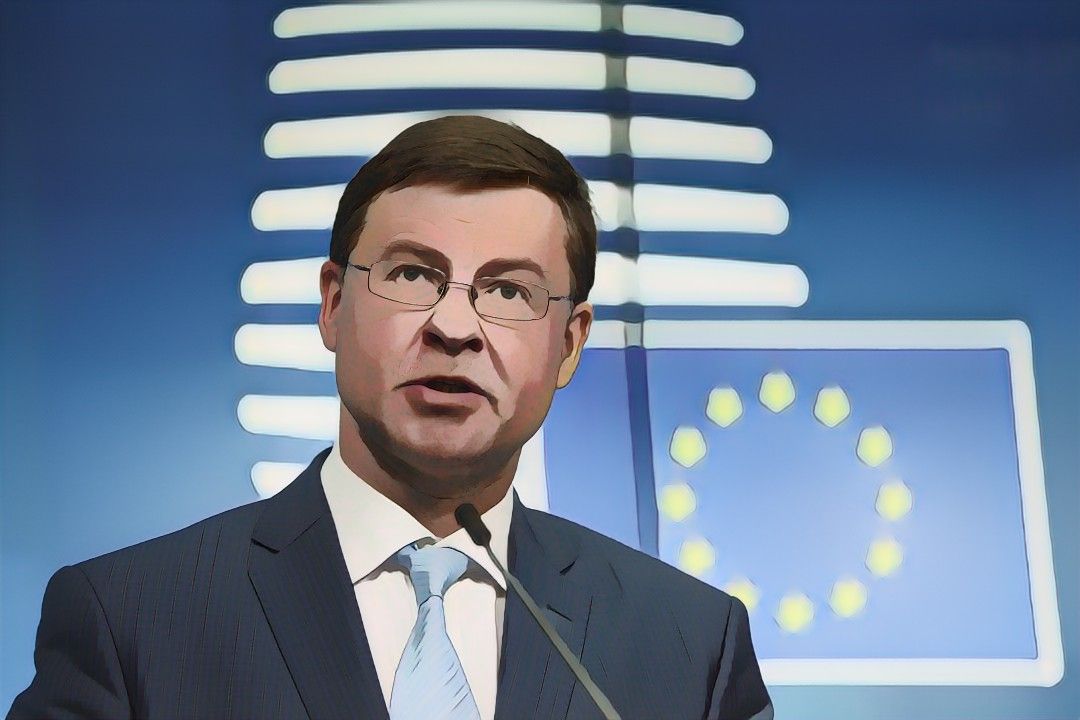EU Trade Chief Visits China to Manage Trade Tensions

The Lede: On Tuesday, the European Commission for Trade Valdis Dombrovskis wrapped up his four-day China trip where both sides agreed to work together and exchange information to re-balance export policies in an effort to bring down their recent trade tensions.
What We Know:
- On Monday, Dombrovskis held talks with He Lifeng, China’s vice premier overseeing monetary issues and foreign investment at the China-European Union High-Level Economic and Trade Dialogue.
- The two sides specifically agreed to work on the flow of agricultural products and alcoholic beverages. China also committed to clearing its backlog of applications for licenses of European infant formula. He expressed that his side is willing to import more from the EU and that he hopes that Europe will remove restrictions on exports of high-tech products to China.
- Similar to an arrangement emerging from U.S. Secretary of Commerce Gina Raimondo’s visit to China last month, the EU and China agreed to set up a ‘mechanism’ to discuss export controls. They also noted that both sides would consider a mechanism for supply chain transparency for raw materials.
- Dombrovskis also raised the issue of the Russia-Ukraine War as a major obstacle between the EU and China as the latter refuses to condemn Moscow.
- In addition to Beijing, the EU Trade Commissioner also visited Shanghai’s commercial hub and a brake factory in Suzhou.
The Background: Trade ties have been worsening between the EU and China. A sentiment of ‘de-risking’ has become the norm across Europe as countries in the region re-think and re-position themselves against exposure to China. Recently, European Commission President Ursula von der Leyen announced the start of a probe into Chinese state subsidies for electric vehicles, which they argue have unfairly undercut their car brands. Germany has adopted a China strategy that recommends that the country’s companies should reduce their dependence on China.
Likely Outcomes:
- Dombrovskis’ visit to China and his expressed desire to stabilize trade relations with China appear to clash with the overall ‘de-risking’ measures that the EU and individual European countries have been implementing in recent months. The substantive moves that both sides agreed upon show a handful of areas of cooperation between the two sides while the electric vehicle and semiconductor industries remain a thorny issue.
- Moving forward, there will likely be many industries that will not see too many obstacles to trade, but others that will be prohibitively difficult to reconcile between China and the West. Each side will have to develop supply chains separate from the other in these sensitive industries that trade barriers are being erected for. The formation of this mechanism to discuss export controls could smooth out the gap in communication between the two sides so that respective industries can adapt to policy changes.
Quotables:
“We stand at a crossroads. We can choose a path towards mutually beneficial relations. One which is based on open, fair trade and investment. Both the EU and China face significant political and economic headwinds. And some of these headwinds may cause us to drift apart.” – Valdis Dombrovskis, European Commissioner for Trade
China hopes that the EU would exercise restraint on the use of trade remedies, and to keep the expectation of the development of EU-China trade stable.” – He Lifeng, Chinese Vice Premier
“These dialogues used to be common. But under the current circumstances, with so many external uncertainties and factors affecting the relationship, the most important outcome was to reaffirm the value of having dialogues, to see that both sides are searching for stability and to seek resilience in the relationship” – Cui Hongjian, professor with the Academy of Regional and Global Governance at Beijing Foreign Studies University
Good Reads:
China and Europe try to dial down trade tension (CNN)
China and EU agree export controls ‘mechanism’ to ease trade tensions (FT)
